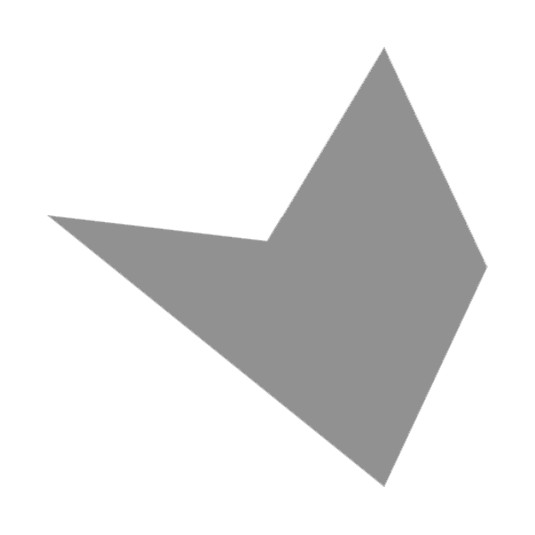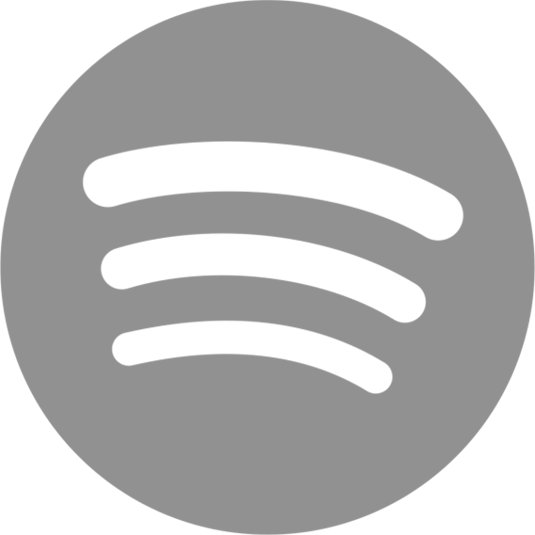words about jh | article
jon hassell
mark j prendergast | sound on sound | 1991
Jon Hassell has been at the leading edge of new music for three decades, with major contributions to Western avant-garde and World Music. Following the re-release of two classic albums from the early ’80s, Mark J Prendergast presents a retrospective of Hassell’s work.
”JON HASSELL IS more than a superb musician, and more even than a gifted composer. He is an inventor of new forms of music—of new ideas of what music could be, and how it might be made. His work is drawn from his whole being, and, by implication, from his whole cultural experience without fear or prejudice. It is an optimistic, global vision that suggests not only possible musics but possible futures.” (Brian Eno, November 1986.)
Hassell’s drifting, digitally altered trumpet lines have been a mainstay of new music for three decades now. The release of City: Works Of Fiction last year brought an unprecedented wave of enthusiasm from a younger audience addicted to House music. Its urban sound clicked with minds willing to accept innovation, and 808 State even produced a House 12″ of ‘Voiceprint’ from the LP. Reviews were good, and this year the CD release of the Hassell classics Dream Theory In Malaya and Aka-Darbari-Java / Magic Realism brought even more praise. Q weighed in with a 4-star gusher of a review, citing Hassell’s work as “visionary”, “magnificent”, and a direct influence on the music of Sting, David Byrne and Peter Gabriel.
bridging the generation gap
Of course, Hassell’s trumpet spans several generations and movements. An early convert to jazz, he went through American conservatories and on to study with Karlheinz Stockhausen in Germany. There he met lrmin Schmidt and Holger Czukay, future founders of the experimental German band Can. Back in America he teamed up with Terry Riley for 1968’s renowned In C, the first minimalist recording. From there he went on to work with La Monte Young, to travel in India and, crucially, to meet Talking Heads and Brian Eno and offer a pivotal appearance at Peter Gabriel’s first WOMAD in 1982.
His contribution there and the release of Aka-Darbari-Java in 1983 cemented the idea of World Music for all time. With his array of musicological qualifications, Hassell continued to explore via the work of David Sylvian (Alchemy 1985), Kronos Quartet (White Man Sleeps 1987) and Peter Gabriel (Passion 1989). Hassell’s trumpet sound is unlike any other in modern music. Its effect on Brian Eno’s 1982 On Land is positively frightening, sending a cold electrical shock down the spine of the listener. On Peter Gabriel’s Passion, however, it is sensuous, mystical—full of the desert atmosphere so integral to the Scorsese film for which the music was written. It can cross continents, genres, eras. It can unify cultures and, more than any other sound, it has helped splice the divided First and Third Worlds. Not for nothing has Hassell been feted by the American critics, and in 1980 he made The New York Times’ Top Ten essential albums with the Brian Eno collaboration Possible Musics.
roots
Hassell was born in Memphis, Tennessee, in 1937. His father worked for the internal revenue service, and played the cornet. Jon grew up in the jazz age in a racially segregated state, a white boy in love with black music. His memories are quite vivid.
“You can imagine what the atmosphere was like for me as a teenager, growing up in the Memphis of the 1950s. I had picked up this cornet and started imitating whoever the going trumpet player was. I liked Stan Kenton. He was a major hit for me when he came through town with this big combo called the Innovations Orchestra, which included an 18 year-old Maynard Ferguson who was blowing a stratospheric trumpet at the time. The combination of that sound and all those strings was a heady brew for a teenager in high school in Memphis.” Hassell’s circle of friends extended across the racial barriers of the time, and he frequented dance clubs in the ghetto areas on the fringes of Memphis. Hassell was witness to a cultural crosspoint that years later would formulate his musical direction. Yet his background dictated a university education, and after high school he traveled to New York state to study composition and orchestral trumpet.
“I enrolled in Eastman School of Music in Rochester. I got a scholarship after the first year, an aspiring musician who played in dance bands in the style of Glenn Miller. I studied legitimate orchestration at Eastman, which was just about the right transition required to put me face to face with another part of the musical spectrum. People like Ron Carter and Chuck Mangione were in my class—but Eastman was a very conservative school, and by the time I got my master’s degree I was one of those young turks into atonal/12-tone music. A post-Webern as they called us then.”
stockhausen
Hassell became fascinated by the work of German electronic genius Karlheinz Stockhausen, who had become famous for building pure electric music from tone generators and oscillators. His ideas attracted loyal students, and from giving Summer courses at Darmstadt, Stockhausen had to expand his tuition to cover a full year’s curriculum in Cologne. During the mid-1960s Jon Hassell would spend two and a half years studying with him. “I really was impressed by his ‘Gesang der Junglinge’, ‘Kontakte’ and ‘Gruppen’ for three orchestras. I really wanted to know where the notes came from. At the time I was in a scholarly or experimental vein, had temporarily given up the trumpet and was devoted just to the abstract side of music. Stockhausen was my first contact with what you could call a thoroughgoing, through and through musical artist. His life was completely devoted to his music. I went there, to The Köln Course For New Music, and was exposed to the music of Berio, Pousseur and Boulez.”
Jon recalls that Holger Czukay and Irmin Schmidt were classmates of his. The two would later form the openly experimental rock group Can, who made improvisation ethnicity the modus operandi of German heavy rock in the early ’70s. Hassell was impressed by their wackiness, and especially by the the zany imagination of Czukay. Another significant event during his period in Germany was hearing Stockhausen perform a composition by La Monte Young, the man credited as being the first to play minimalism. Young was overtly eccentric, and used a complicated system of piano tuning called ‘just intonation’ which created shimmering waves of reverberations.
Again Hassell’s career was about to take a left turn.
“When I left Germany in 1967 I arrived back in New York and went to the centre for the Creative & Performing Arts at Buffalo, University. Terry Riley was a guest for one of the semesters and part of his stay was to form an ensemble made up of both composers and performers. That’s when I started to play trumpet again. Terry had interest from David Behrman at Columbia to record his ‘In C’, and thus I ended up on that record.
“Terry was very influential, and what struck me was his description of atonal/Webern and Stockhausen’s music as ‘neurotic’. Now that made me stop and think. Avant-grade music was a perfect model for 20th century problems, and the fact that it originated in Vienna at the same time as Freud was no mere coincidence. So we thought there’s things you can create that you can actually enjoy listening to and that you can float away to. And of course the history of drugs in America is inextricably interlaced with this early Minimalism, there’s no question about that.
sonic sculptures
The next period in Hassell’s life would be packed with experiment and adventure. While pushing forward academically (working on a Ph.D in musicology, involving advanced studies in Gregorian chant), Jon was simultaneously working with La Monte Young, and on ‘sonic sculptures’. In 1969, while still at Buffalo, he created ‘Solid State’, a tuned sound mass which surrounded an audience with vibrational forms evoking the imperceptible shift of sand dunes. A hit on the US art circuit, Hassell was granted a National Endowment for the Arts Award for this in 1977. Hassell explored the idea further with his Landmusic Series (1969-1972), a collection of sound monuments. ‘Ocean/Desert’, for example, consisted of the live sound of the ocean transmitted to underground speaker silos at a remote desert location. Hassell describes these ventures as “my personal contribution to the Minimalist genre”. His work with La Monte Young took up most of his performing time up to the late 1970s. Both worked intensely on ‘Dream House’, a concept of continual drifting music and colour alterations, and in 1973 Hassell appeared on a recording of the same. Because of LaMonte’s antagonism to the recorded medium only three items have ever appeared in 40 years of exploration. An influence on both rock via The Velvet Underground and on New Age via Minimalism, Hassell considers him vital to his career.
“He is extremely important. An innovator of the sound that Steve Reich, Philip Glass and Terry Riley make. Now the essence of his music is not necessarily the easiest to capture via reproduction. It’s best heard in a four hour concert where he and his wife Marian Zazeela are projecting sound and vision, and the listener drifts in and out at various stages of consciousness while simultaneously viewing these gradually changing interlocking forms related to Persian calligraphy. That is something very difficult to put on record!”
However, Hassell’s biggest break from Western classical music came by chance during the early ’70s. Back at Buffalo he met Terry Riley again, who presented him with a tape of an Indian singer named Pandit Pran Nath, an expert in the age-old kirana style of Northern Indian singing. Shortly after, while at a new music festival in Rome, Hassell met him for the first time—a meeting that would literally change the course of 20th century music.
“Myself and La Monte were doing the ‘Dream House’ at Documenta in Rome and Pran Nath was also on the bill. I was completely dissatisfied with abstract music and very keen on my trumpet again. I was listening to Miles Davis’s On The Corner at the time. It had a real Fourth World feel to it—almost one long piece with tabla and so forth. I was practising the trumpet a lot, putting wah-wah pedal on it, trying to move it beyond the norm. Anyhow I heard Pran Nath warming up before the Rome show and I started to accompany him, and patterns started to come out which I never imagined were possible. It was like something out of Gurdjieff’s Meetings With Remarkable Men.
“With Pran Nath here was a lens back through the last five centuries into a tradition that was passed down orally which was pure music, a purely devotional form of sound. it was simple, yet the deepest possible illumination, the drawing of a line that reached back into the early history of man. That is the essence of everything I’ve done since, the foundation stone of all my best work.”
a passage to india
In 1972 Hassell and La Monte Young went to Dehra Dun in India to study with Pran Nath spending a good deal of time meditating in the temple of Nath’s spiritual master. Hassell absorbed the atmosphere with relish, and was keen to transpose the singing style to his trumpet. Back in America both Young and Terry Riley organised tours for Pran Nath, who became an integral part of the new music scene. Here in essence was the genesis of what today we call World Music. While pursuing more academic work on Indian raga, Hassell began seriously to consider a recording career. His first album, Vernal Equinox, was released in 1977. It featured integrated raga lines with electronically treated trumpet.
“From 1973 up until then I was totally immersed in playing raga on the trumpet. I wanted the physical dexterity to be able to come into a room and be able to do something that nobody else in the world could do. My aim was to make a music that was vertically integrated in such a way that at any cross-sectional moment you were not able to pick a single element out as being from a particular country or genre of music.”
earthquake island and possible musics
On 1979’s Earthquake Island Hassell turned back to jazz improvisation with the help of ex-Miles Davis/Weather Report musicians and Brazilian percussionist Nana Vasçoncelos. The latter also accompanied Hassell to Canada at the invitation of Brian Eno for the recording of Possible Musics at the Lanois brothers’ studio. On that album’s six incredible tracks, Hassell’s digitally pitched trumpet lines come at you like a fireball from another land. With Percy Jones on bass and ‘cloud guitars’ and Eno on a variety of Prophet synths, Moogs and treatments, Hassell’s sound found the sonic background that it needed to fly. The album’s 1980 release put Hassell on the popular map as a voice of astonishing individuality. From there his star was in the permanent ascendant.
This lndo/African confection was Hassell’s demonstration of a tension, as he put it, “between the construction and freedom that exists in all great non-Western classical musics. The contrast between our structural music and the sensual sounds of Third World countries”—hence the ‘Fourth World’ moniker.
Possible Musics’ gliding trumpet lines, with their heavy harmoniser and echo treatment, were what hooked most listeners. Here was an original sound made by somebody who, like any great musician, had lived through his music. The 1981 release of Dream Theory in Malaya brought an unprecedented wave of support from critics on both sides of the Atlantic, and its current re-release on CD is a reminder of just how many risks Hassell was willing to take at the time. Abandoning the smoothness of the 1980 work, here he aims for a visceral shot of South East Asian tribalisms. It is a grand melange of pottery drums, bowl gongs, bells, bass and drums, coordinated by guitarist Michael Brook at Grant Avenue, Ontario. Daniel Lanois, Eno and Brook all participate, but it’s wholly Hassell’s show as the sleeve notes demonstrate.
“Dream Theory in Malaya is named after a paper by visionary anthropologist Kilton Stewart, who in 1935 visited a remarkable highland tribe of Malayan aborigines, the Senoi, whose happiness and well-being were linked to the morning custom of family dream telling—where a child’s fearful dream of failing was praised as a gift to learn to fly the next night, and where a dream-song or dance was taught to a neighbouring tribe to create a common bond beyond differences of custom. The Semelai are another tribe not far from the Senoi who live in the largest swamp area of Malaya. A recorded fragment of their joy-filled watersplash rhythm was restructured and became the generating force for the composition ‘Malay’ as well as providing a thematic guide for the entire recording.”
towards world music
Though Hassell was an honoured guest on Talking Heads’ Remain In Light album of 1980, it was Dream Theory that put him on the cultural map. Peter Gabriel phoned him to encourage his participation in the 1982 World Of Music, Art and Dance Festival in Bath. His presence alongside the Master Drummers of Burundi and The Royal Court Gamelan of Indonesia finally cemented the idea of World Music in the UK. Gabriel was familiar with all of Hassell’s records, and was fired by their sound. He had some more unusual fans, too—Dream Theory impressed the French Ministry of Culture who, in the same year, enrolled Hassell as a conferee in the Rencontres Nord/Sud, a colloquium of international artists on world culture.
Another spin-off of Dream Theory was an invitation to score Sulla Strada, an opera for the Venice Biennale which the normally restrained La Monde praised to the heavens. Perhaps not surprisingly, Hassell’s ‘future primitivism’ won him many European awards. Having become an international celebrity in 1982, and contributing to Eno’s aforementioned On Land along the way, Hassell was determined to push ever forward into new musical territory.
magic realism
By 1983 he had a new album ready, entitled Aka-Darbari-Java / Magic Realism. Recorded once more with Dan Lanois in Canada, this time the music featured advanced computer sound-imaging techniques, with Hassell taking control of all keyed voices, instruments, mixing and treatments (except the drums, which were the work of Abdou Mboup, working in Paris). A rallying attack on Eurocentricity, Aka-Darbari was Hassell’s greatest achievement up to that point. Its current CD re-issue highlights its magnificence even more, the clarity of the digital mastering bringing to the fore dozens of new details in what is Hassell’s most sophisticated and smoothest listen.
Consisting of seven tracks, ‘Empire 1-5’ and ‘Darbari Extension 1 & 2’, the album takes one’s mind to a place high above the earth where every culture is within aural reach. Hassell’s sleeve notes describe a trumpet tracing Indian Darbari motifs over Senegalese drumming, Hollywood orchestration of the 1950s, Aka pygmy voices from the Central African rainforest, and Gamelan cascades from Java—but no matter how often you heard it then or hear it now, the disc never sounds the same twice.
The American critics raved, calling it “unearthly”, “the soundtrack music to a film that plays in the mind”. The alternative moniker of the album, Magic Realism, made obvious references to Gabriel Garcia Marquez and other Latin American writers. Even Britain’s Melody Maker was positive: “Anyone interested in the new frontiers of electronic music should take the time to investigate Jon Hassell’s unique blend of magic and science.”
Nowadays it’s the sound that bites—no-one since has made music of such rich abstraction. As Hassell wrote at the time, “The ability to bring the actual sound of musics of various epochs and geographical origins all together in the same compositional frame marks a unique point in history.”
So how does he view that historic recording today? “There I was using little tiny fragments, like a painter making a construction out of newspaper. There are numerous fragmentary computer samples circulating around each other especially on the ‘Darbari’ tracks. On ‘Empire’ one can discern this voice which is that of Yma Sumac, a singer with a four or five octave range billed as the Hollywood lnca princess in the 1950s. Les Baxter was her arranger and the music was very Hollywood exotica. The fragment of her voice is mixed in with pygmy singing and a little bit of that orchestration. Aka-Darbari is my favourite recording. It has a very special place for me, a very visual work akin to painting. The blendings are so natural and have had such a positive response.
I never thought at the time about the market for this or whose going to hear it or appreciate it or anything. I’m happy it made such a positive impression.” •
chronology 1983-1991
1983: After the successful release of Aka-Darbari, Hassell forms The Jon Hassell Group with JA Deane, Jean Philipe Rykiel and occasionally Michael Brook and Richard Horowitz. A world tour is undertaken starting in Tokyo through Paris, Venice Amsterdam, Stockholm, Brussels, Oslo, Berlin, Hamberg, Chicago and culminating at the Brooklyn Academy of Music in New York.
1984-1985: Hassell’s contributions to David Sylvian’s Brilliant Trees and Alchemy (Words With The Shaman) make for some of the most evocative music of its time. “Of all my collaborations,” said Hassell, “David’s work is the closest to my temperature.” Scores Shadow Work, an American stage play with director Peter Sellars.
1986: Release of Power Spot on ECM and The Surgeon Of The Nightsky Restores Dead Things By The Power Of Sound on lntuition; both records involve group ensemble playing inspired by 1983 world tour. Scores another Peter Sellars play—Zangezi by Russian Futurist poet Khlebnikov. Newsweek hail his music as “throbbing with a visionary poetry all its own”.
1987: Writes string quartet ‘Pano De Costa’ (Cloth From The Coast) for the Kronos Quartet’s White Man Sleeps album (their biggest seller). Another ethnic composition ‘Map Of Dusk’, appears on Sub Rosa compilation La Nouvelle Serenite. Plays on Lloyd Cole’s album Mainstream.
1988: While working with Farafina, an eight piece group from Burkino Faso, teams up again with the Eno/Lanois production team for New York recorded album Flash of the Spirit. Tours with Farafina—Berlin Jazz, Tokyo La Foret Museum, Sardinia, New York and beyond.
1989: Records title track for Peter Gabriel’s album Passion, the theme music for Martin Scorsese’s controversial film The Last Temptation of Christ. The album is hailed as a masterpiece. A permanent move to Los Angeles sees him re-unite with Terry Riley for a re-mix of a Chinese recording of ‘In C’. Forms new ‘City’ group with Gregg Arreguin (guitar), Jeff Rona (keyboards), Adam Rudolph (percussion) and Daniel Schwarz (bass). Goes to New York in Sept/Oct for a series of explosive concerts at the Wintergarden of the World Financial Centre. Brian Eno mixes all concerts.
1990: Release of City: Works Of Fiction. A high-tech recording, it draws on the urban/ethnicity of black American rap music, African literature, writers like Italo Calvino, Jean Baudrillard, and film directors Ridley Scott and Federico Fellini. UK response is overwhelmingly positive. Select’s Richard Harris gives it the 5-star treatment, describing the contents as ‘pure magic’. Manchester’s 808 State re-record the track ‘Voiceprint’, for club consumption.
1991: CD release of Dream Theory in Malaya and Aka-Darbari-Java / Magic Realism to critical acclaim.
This interview first appeared in Sound On Sound
July 1991 | www.soundonsound.com






